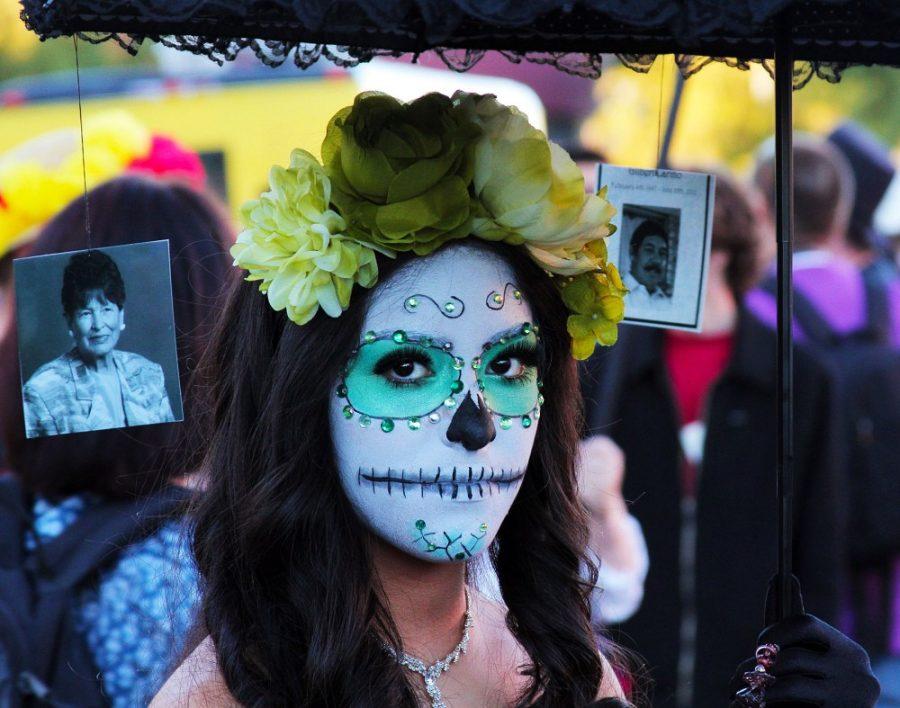The All Souls Procession, originating in Tucson in 1990, remains an inclusive public ceremony of grief, loss, celebration, life and art.
The procession was created to offer a place to those in need of mourning and celebrating their lost ancestors, friends and loved ones and remains a popular annual event in the city.
“The procession was started by a local artist Susan Johnson, but after many years, the procession has now become a formal event,” said Melanie Cooley, operations director and board officer of the Tucson non-profit Many Mouths One Stomach.
Karel Moonen, media director and board officer of MMOS said the procession is one of the ways he is able to give back to the community.
Cooley said MMOS is responsible for organizing the procession. The non-profit also operates as a way for local artists to create and inspire the public through the procession’s festival culture.
“Grief is universal,” Cooley said. “In modern culture, there aren’t many places where people can openly express their emotions. While grief is universal, it is not always culturally accepted. Here at the procession, grief and joy are welcomed.
Karel Moonen, media director and board officer of MMOS, said the procession is one of the ways he is able to give back to the Tucson community. Moonen has handled all the photographers and videographers for the past five years.
“Just seeing the community come together for this event really touches my soul,” Moonen said.
Moonen said that in previous years, people from over 30 different states and other countries have come to join
the procession.
“Tucson makes this event happen; this event is a people-driven event where people come from all over the world to participate,” Moonen said.
Cooley said the reason she keeps volunteering every year is to hear people’s stories. Managing the social media aspect of the event, Cooley looks through all the ancestral photos submitted and decides what to post on the procession’s social media sites.
“Because I manage the social media, I get to hear many people’s stories, and that is a really amazing to share that connection with so many different people,” Cooley said.
Cooley said that, though the procession is a mix of grief and celebration, it is not a parade designed for spectators but rather participators.
“[The procession] is a participatory walking for the dead where everyone is responsible for their own experience,” Cooley said.
People will bring what they want to this procession, and to many, this event is a funeral, so Cooley said to be respectful and responsible.
The staff dresses up every year along with the rest of the participators. Unlike the rest of the festival, though, none of the procession crews are dressed as sugar skulls.
“We [the staff] make our own costumes and it helps to ready us for the emotional experience of the procession,” Cooley said.
This year, the staff’s theme is “hunters and the hunted.” Some of the staff will dress up as prey animals, antelopes and others as predators like cheetahs.
The 10th annual Procession of Little Angels, a walk more geared toward kids’ grief, takes place in Armory Park. It happens Nov. 5, the day before the main procession, from 3-7 p.m.
“The [Procession of Little Angels] really came out of the need to focus on the grief and needs of children,” Cooley said.
In this pre-celebration event, the park fills with children and families who paint wings, make paper flowers and dress in costume. The goal of the event is to approach the concept of grief in child-friendly way.
Follow Sarah Briggs on Twitter.









